May 10th. 2012.
We got up at 7:00 a.m. this morning, had breakfast in the hotel and left for the Danube bend at 8:00 a.m.
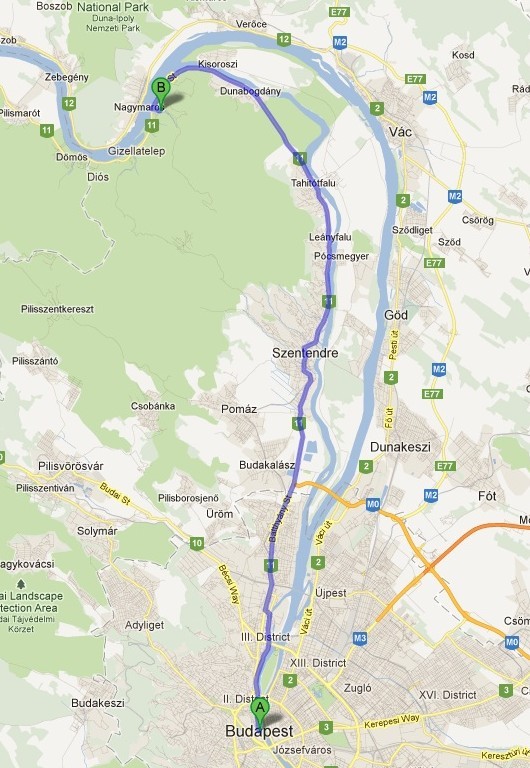
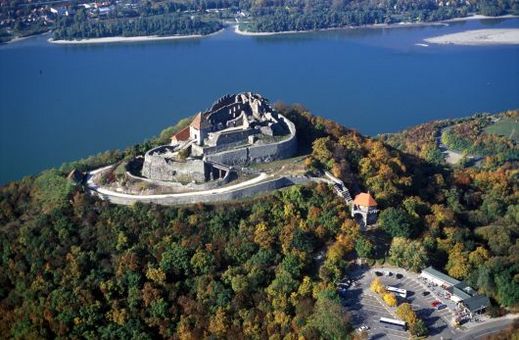
Visegrad Cstle
On the way to the Danube bend we stopped a beautiful little village called Szentendre.
Szentendre, with its colorful houses,
narrow alleys, and two- dozen museums, is the most frequently visited
tourist center along the Danube. This Mediterranean-like town is the
home of Serbs who fled from the Turks and settled here in the 14th-17th
centuries. Seven church towers rise high in the sky. Four of them belong
to the Orthodox Church. Icons, works of gold and silversmiths and other
treasures are found in the Serb Orthodox Church Museum. The 13th-14th
century Roman Catholic Parish Church stands on the Castle Hill, a
sun-dial on its wall tells the time. For the tourist who is looking for
nostalgia, there are: shops, restaurants, trade signs, the ancient
buildings of the Main Square, and the house ornaments.
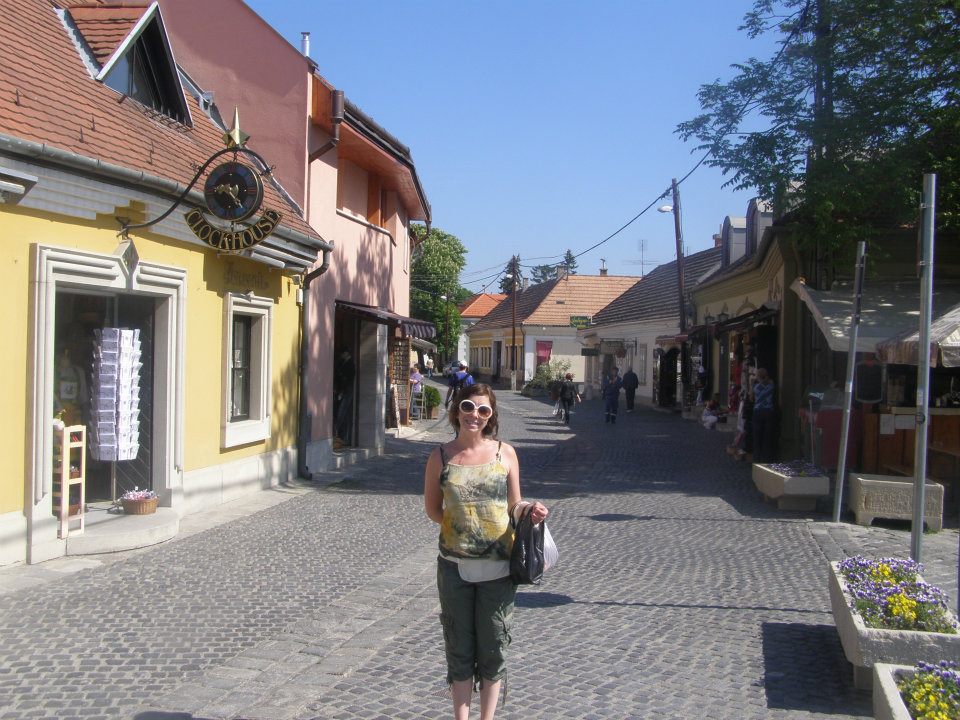
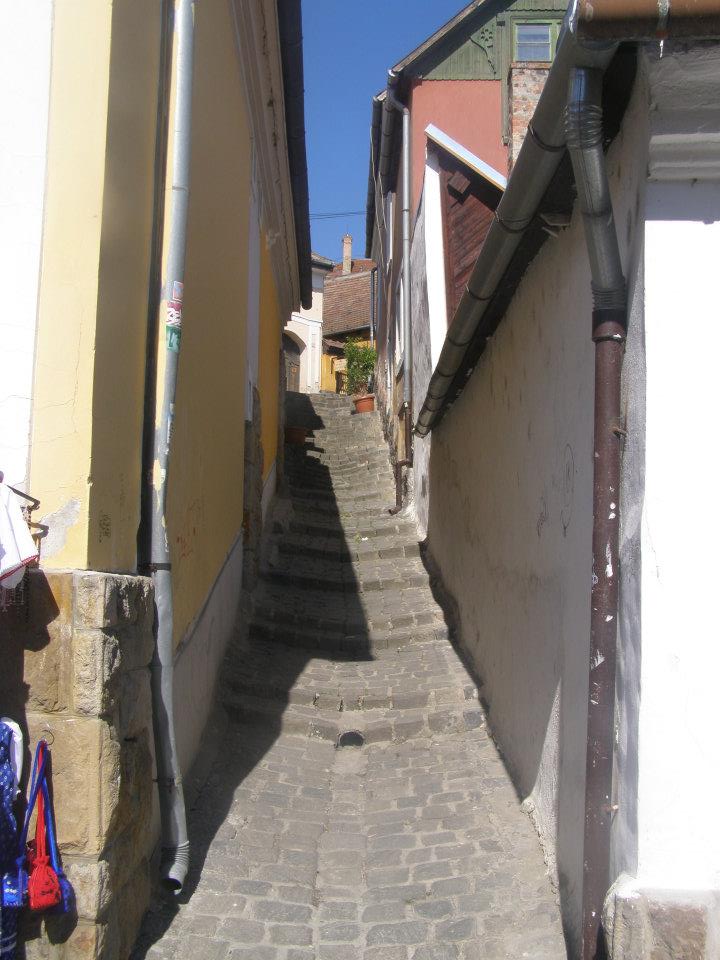
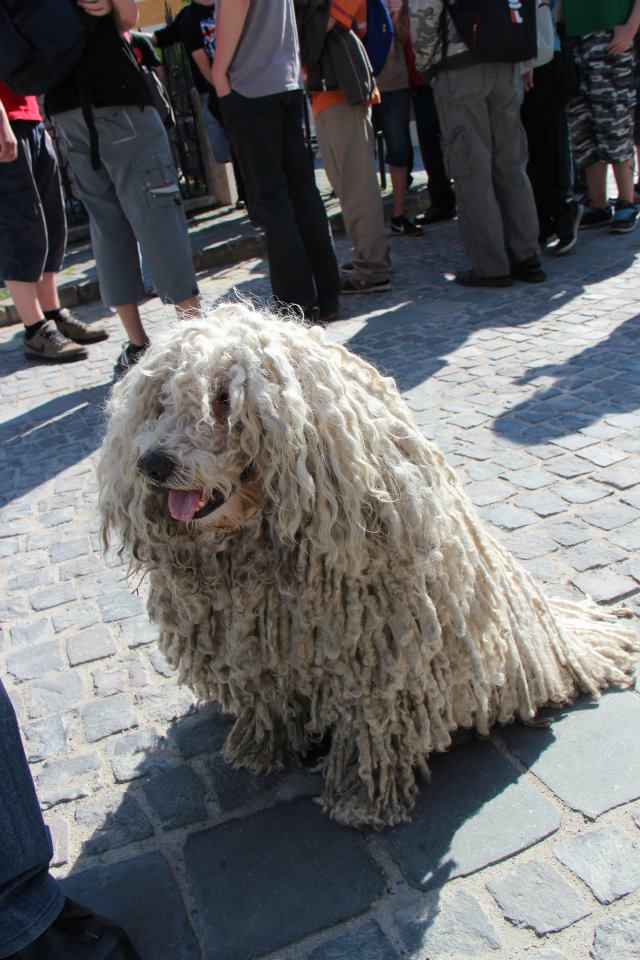
These are our pictures of Szentendre. Everybody were shopping crazy here, but we got to see a real Hungarian dog called PULI.
After Szentendre we drove to the old Castle of the Danube bend near the town of Visegrad.
The
Citadel (Fellegvár) and the Lower Castle The Visegrád double castle
system is one of the castles built by Béla IV recognizing the
consequences of the Mongol invasion. The fortress preserved its
significance until the Turkish invasions.
In 1246 Béla IV started the
construction of the Citadel . At that time the plan of the
fortress was triangle-shaped, with two towers.
The Old Tower was erected at a
location most at risk, and the Gate Tower protected the southern
entrance. The significance of the fortress considerably improved during
the Anjou era. Once Charles Robert obtained the fortress from Máté Csák,
he moved the royal court here in 1323.
The Visegrád Citadel hosted the
famous Royal Summit of Kings, and the first Anjou King died in the
castle in 1370. The Saint Crown of Hungary was guarded here when Louis
the Great became the King of Poland in 1370, the Polish crown was also
stored in the castle. The palace wings and a new external wall was built
during the Anjou reign. Sigismund of Luxemburg extended the
fortification with a third set of walls and carried out several lavish
constructions.
Following the Turkish reign, after the liberation of Buda in 1686 the
Habsburgs conquered the fortress after a 5-day siege. Due to the
dissolution of the border castle system the fortification became
unwanted and was left to ruin.
The excavation and
reconstruction activities started in 1871 and are still underway today.
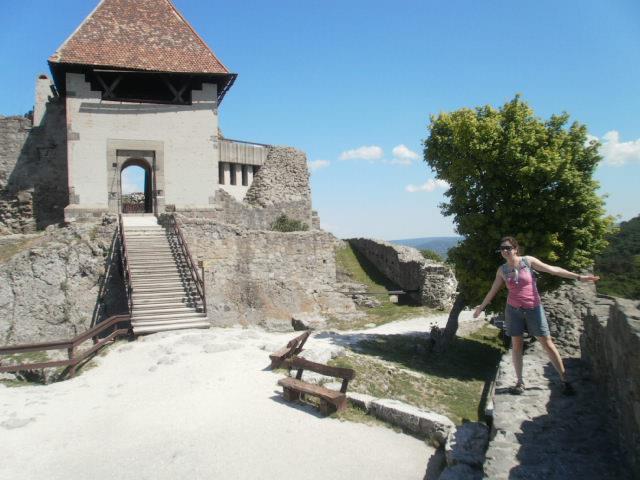
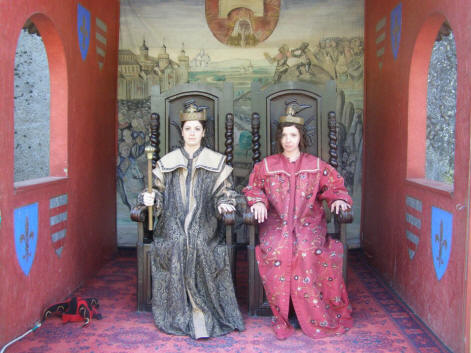
The Visegrad castle where the girls played king and queen.
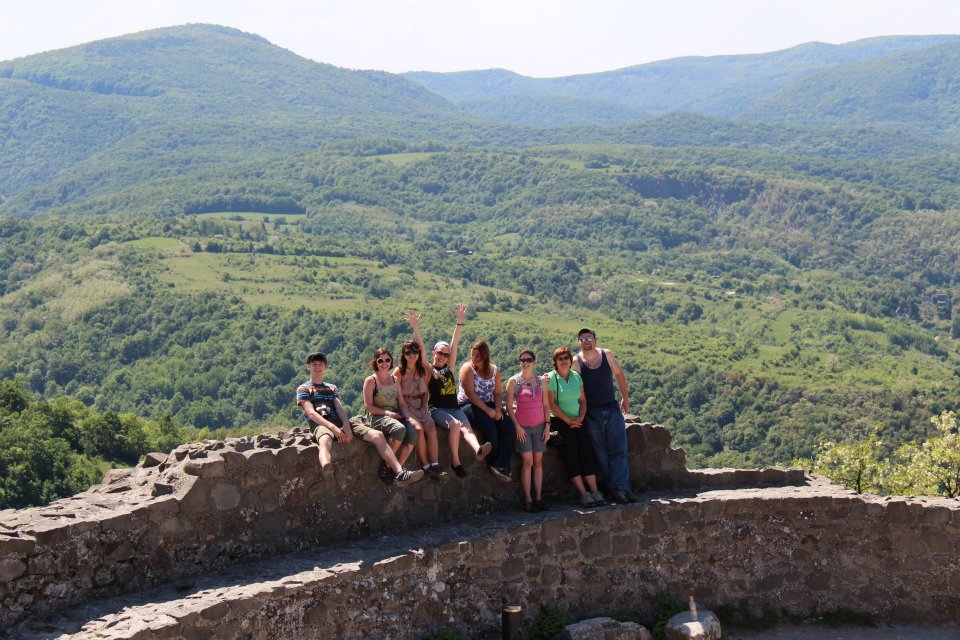
Group picture at the castle
We had lunch on the way down from the castle at a little restaurant.

Waiting for the lunch
We drove to Kecskemet after lunch. We had an exciting afternoon and evening planned. We had the chance to visit a Hungarian family and have dinner with them.
Kecskemét
is a small but beautiful town in centralHungary. Long established as
center for handicrafts and cattle raising, it has also grown in
importance for its viticulture, vegetables, and fruit. It is surrounded
by flat sandy farmland, often referred to as “the orchard of Hungary.”
The locality provides a substantial portion of the country’s fruit,
notably apricots, and produces preserves, syrups, and liqueurs in large
quantity, notably Kecskemét apricot brandy (barackpálinka).
The city dates back
to the Arpad dynasty (9th–14th century), and by the 14th century it had
become one of the privileged half-agrarian “field-towns” (oppida). It
survived the Turkish occupation relatively unscathed as a khas, a
possession of the sultan under his protection. Kecskemét’s polygonal
main square is surrounded by public buildings and by a great Roman
Catholic church and a Franciscan monastery. The city’s old Reform church
was built between 1680 and 1684 by special permission of Sultan Mehmed
IV.
The synagogue (1862) has in its courtyard the
remains of an older synagogue (1818), which now houses an exhibition and
conference center. There are many other churches, museums, and buildings
of architectural and historical significance. The Hungarian composer
Zoltan Kodaly, for whom the internationally renowned Zoltán Kodály
Pedagogical Institute of Music is named.
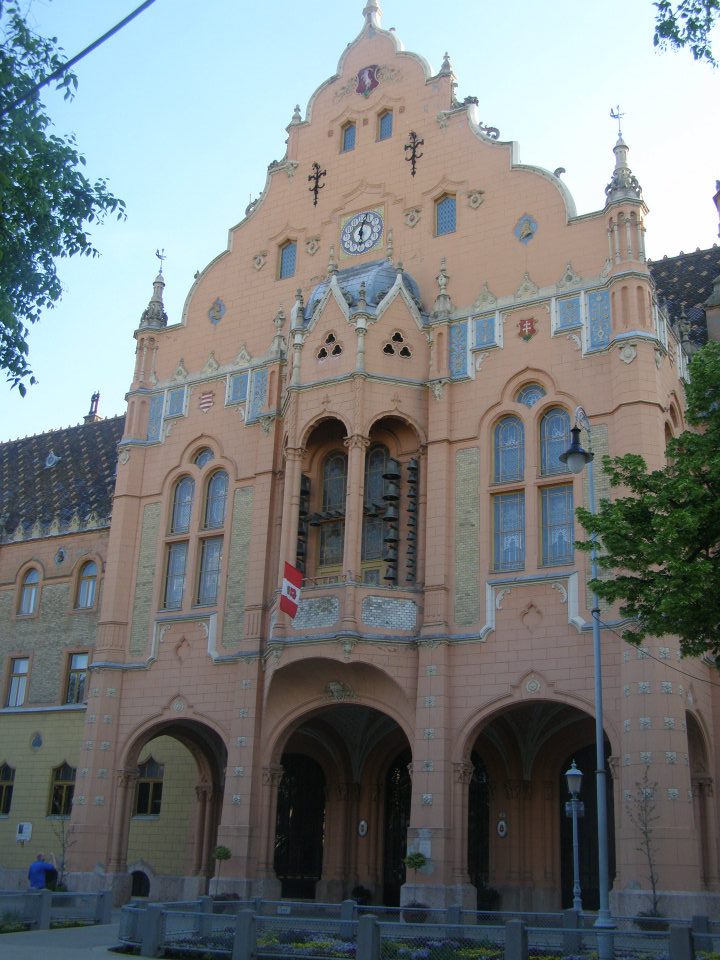
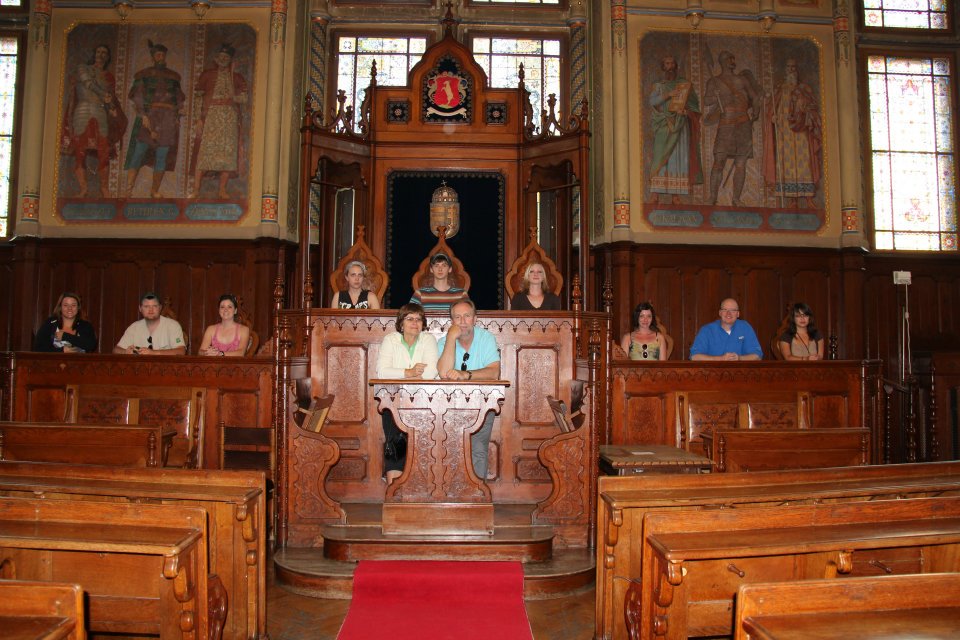
We visited the City Hall, and got to sit in the important people's chairs.
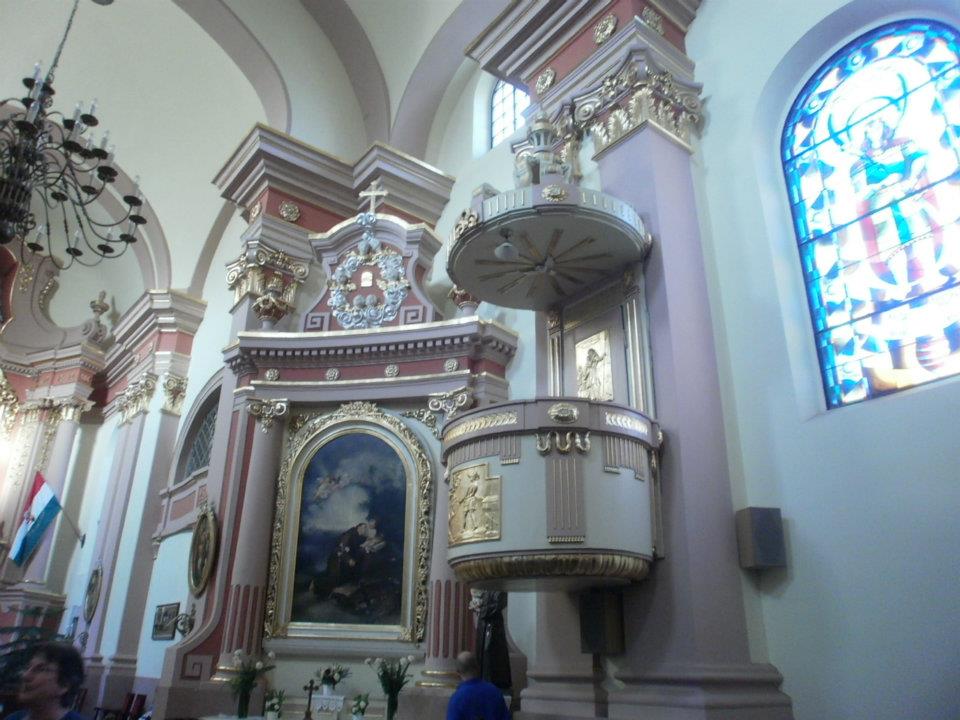
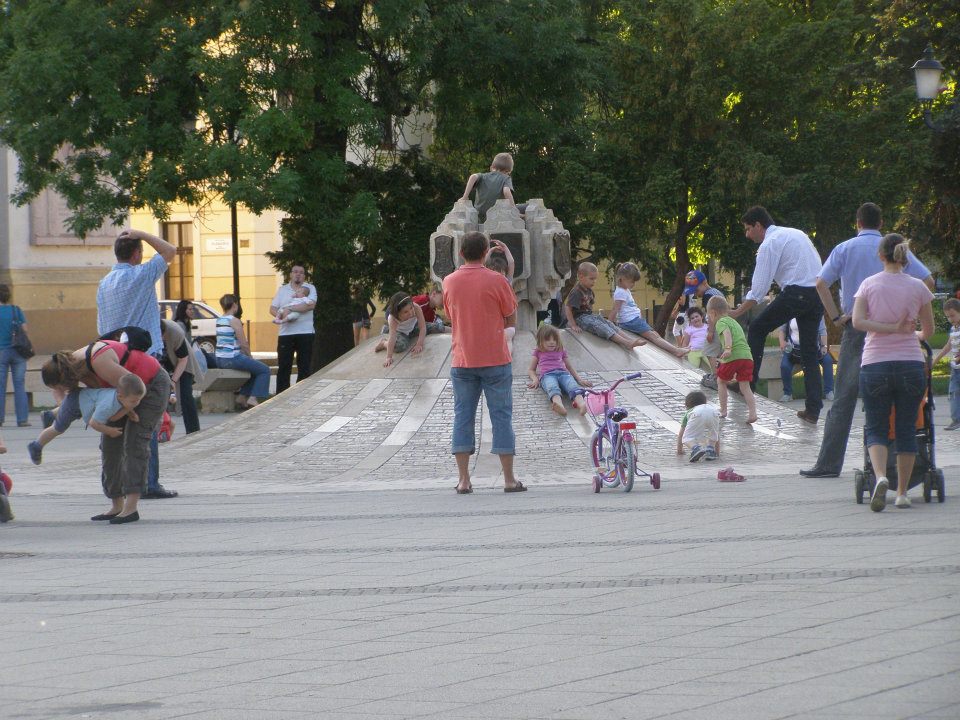
From the journal of Allison Major:
"We went to a Hungarian families house
for dinner too! They were some of Dr. Anna’s old friends and they made
us fish soup, a kind of mac and cheese and a sort of stew I can’t
remember the name of. For desert they made these neat layered cakes that
were pretty great. They didn’t speak much English but we still managed
to communicate. They also gave us a tour of the town they lie in. They
said (after translation of Dr. Anna) that the Worlds Children Program
comes to their little town every year. Well, after diner we were going
to the spa but they were closing and we decided to go back to the
family’s house. We had an amazing time! This is also where I managed to
kiss the trippin’ frog. We all listened to music and were fooled by Dr.
Anna by drinking nonalcoholic bear, ha!

Our host David Mago and the group.
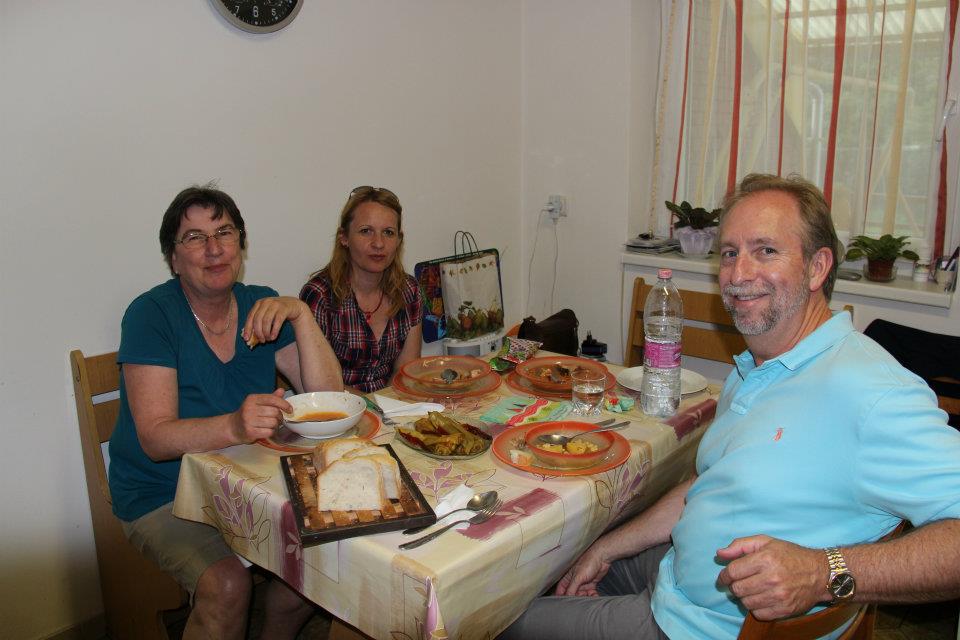
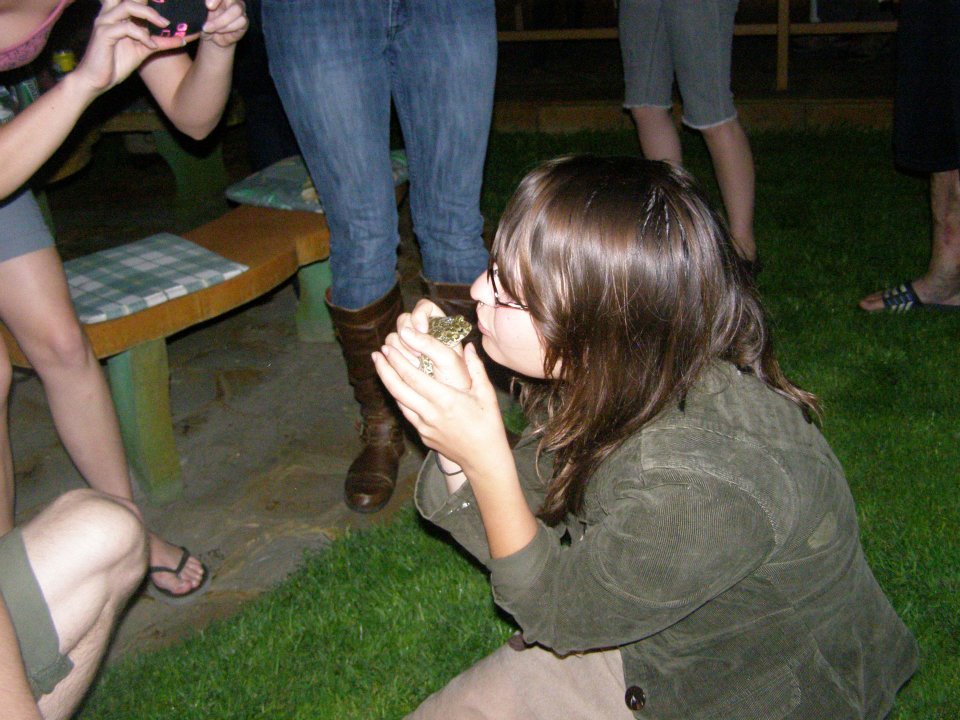
Our host Erzsi Mago. On the right Allison is kissing the frog, hoping for some cool things..
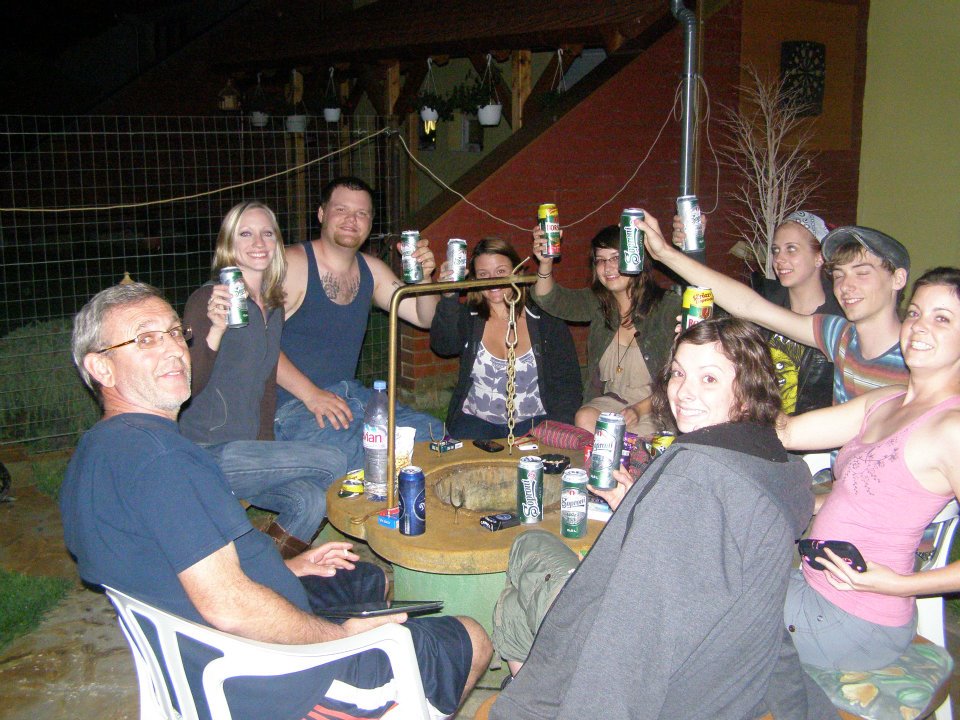

The nonalcoholic beer and our hosts dog Luna.